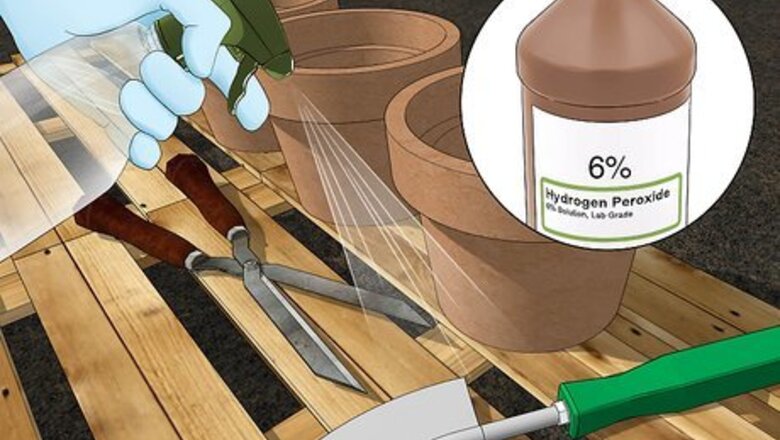
views
Disinfecting with Hydrogen Peroxide
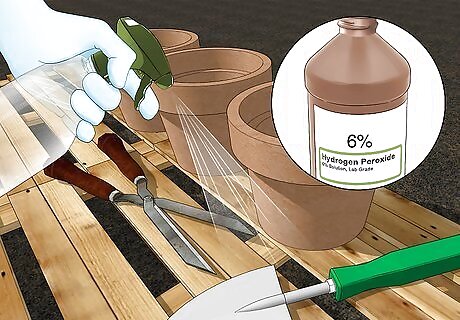
Clean pots and tools. Spray or wipe a 6%-9% peroxide solution on to pots or tools you are reusing. You can also dip tools into the solution while you’re pruning plants. This can disinfect these items and reduce the risk of contamination from other plants or pathogens. Look for pharmaceutical or food-grade peroxide. You may need to dilute the peroxide before using it. Use caution if you want to use a hydrogen peroxide solution over 10%. This can burn skin and plant tissue.
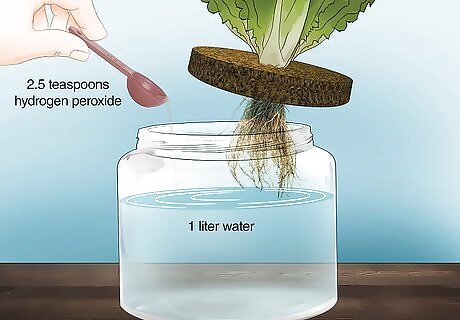
Sanitize hydroponic water. Hydroponic plants, which are grown in water, often fall prey to bacteria, root rot, and lack of oxygen. Add 2.5 teaspoons of hydrogen peroxide to each liter of hydroponic water. This can kill bacteria and fungi, prevent root rot, and stimulate oxygen circulation. In turn, your hydroponics may flourish.
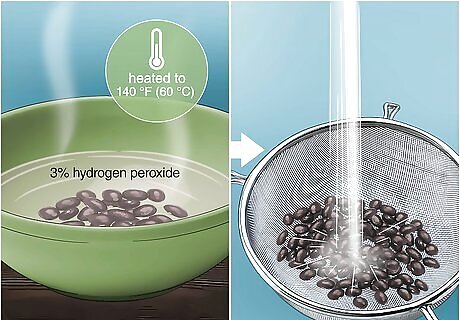
Sanitize seeds. Soak new seeds in 3% hydrogen peroxide heated to 140 °F (60 °C) for 5 minutes. After heating, rinse off the seeds under running water for a minute. This can prevent contamination from foodborne illnesses caused by salmonella, E. coli, and listeria.

Decontaminate growing medium. Soak growing medium such as sand or soil in a 3-6% solution of hydrogen peroxide. Allow the medium to sit in the mixture overnight. Turn the mixture once or twice to circulate throughout the medium. This can kill bacteria, mold or mildew, worms and their eggs.
Boosting Plant Growth with Hydrogen Peroxide
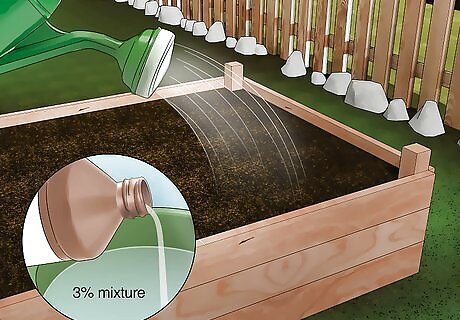
Accelerate seed germination. Once you’ve placed your disinfected seeds in the growing material, they’re ready to sprout, or germinate. Add the same 3% mixture to the soil while sowing the seeds. The extra oxygen can promote faster germination and overall health. It can also minimize the risk of fungal or bacterial infections. Use a weak solution of hydrogen peroxide and water to water the plant bed for up to two weeks after sowing the seeds.
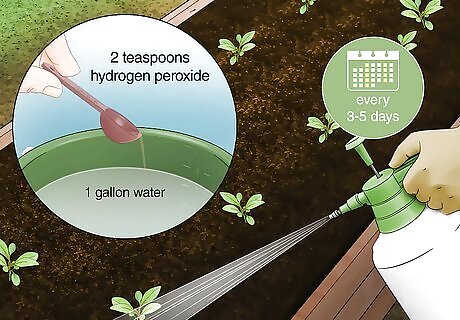
Fertilize with hydrogen peroxide. Mix 2 teaspoons hydrogen peroxide per gallon of water for plant food. Spray or pour onto your potted plants and garden every 3-5 days or as necessary. This can help maintain healthy soil, allow roots to breathe, and plants to take up vital nutrients.
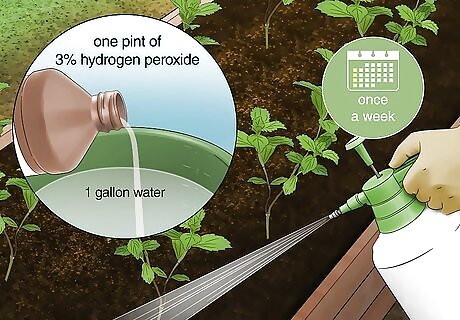
Promote root development. Mix one pint of 3% hydrogen peroxide into a gallon of water. Water the entire plant, soaking the roots thoroughly, once every week. This oxygenates the root area, promoting development during any stage of the plant’s life. Water root cuttings and bare root plants with this mixture.
Repelling Pests with Hydrogen Peroxide
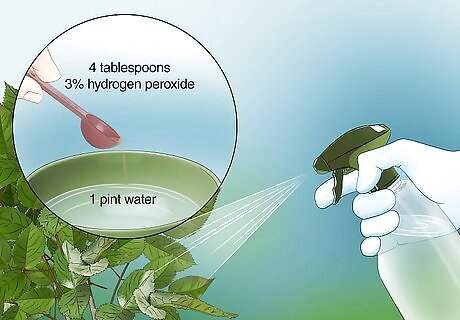
Treat fungal infections. Combine 4 tablespoons of 3% hydrogen peroxide with a pint of water in a spray bottle. Spray this on the leaves and root structures of plants that show signs of fungal infections. These include powdery mildew, rust, and mold. Spray on a small area before applying more generously to larger-scale surfaces. This can prevent chemical burn on your plant tissues.
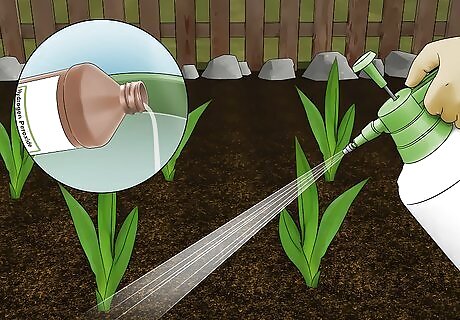
Fight bacterial rot. Pour or spray a mixture of peroxide and water with an anti-fungicide (benomyl) on to a plant exhibiting root rot. Saturate the plant so that the mixture flushes out stagnant, dead water and can replace it with fresh, highly oxygenated water. This can stop bacterial infections, including root rot, that often turn fruits, flower buds, bulbs and tubers to rot into a mush. Dip bulbs and tubers into this mixture when preparing them for storage. It may prevent a bacterial infection.
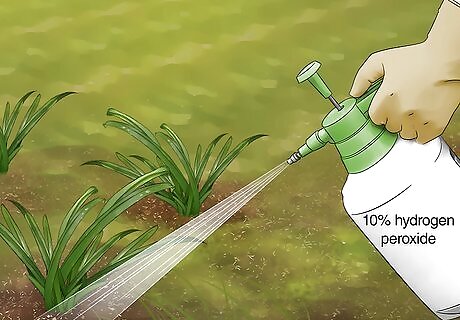
Kill weeds. Pour a 10% hydrogen peroxide solution on weeds growing between concrete, flagstone pavers, or brick. Leave the peroxide on the plants to scorch them and then remove the weeds by hand. This can kill any existing weeds in your garden and may prevent them from returning. It’s also a natural weed-killer that doesn’t use chemicals. Pour the peroxide on in the early morning or late evening to prevent the sun from quickly breaking down the solution. Avoid pouring over weeds that are in pots or plant beds. This may scorch both the weeds and your plants, killing both. Flush any area of your body that comes into contact with this solution immediately with plenty of cold water.
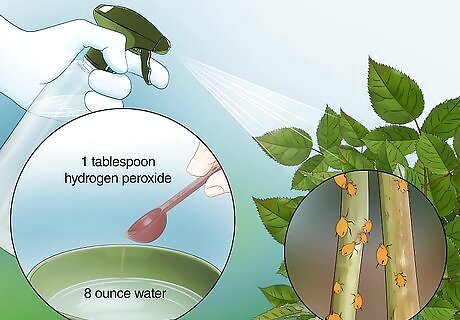
Repel insects. Combine one tablespoon of hydrogen peroxide to 8 ounces of water if your plants are infested by pests. This can dramatically reduce the number of insects in your garden. It can also kill the eggs and larvae of moths and other harmful pests.

















Comments
0 comment